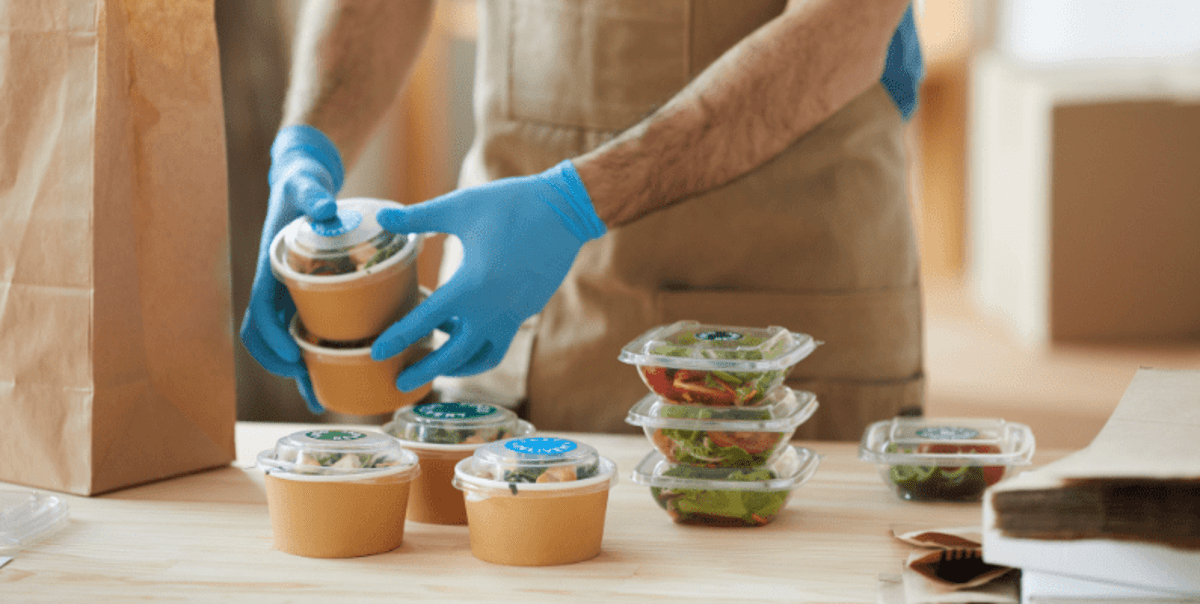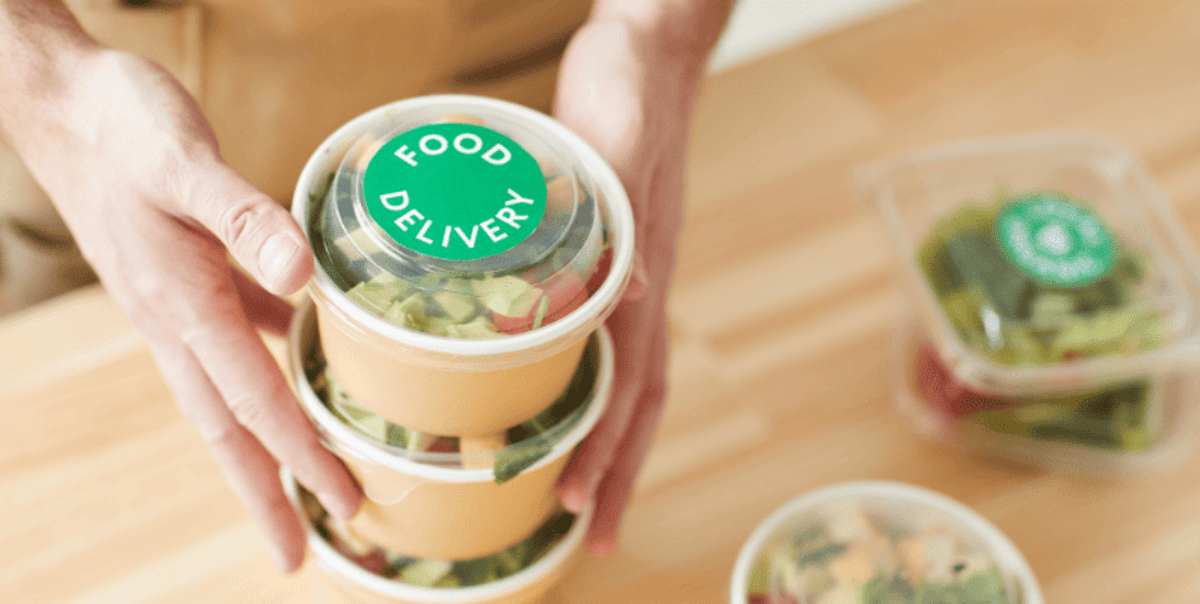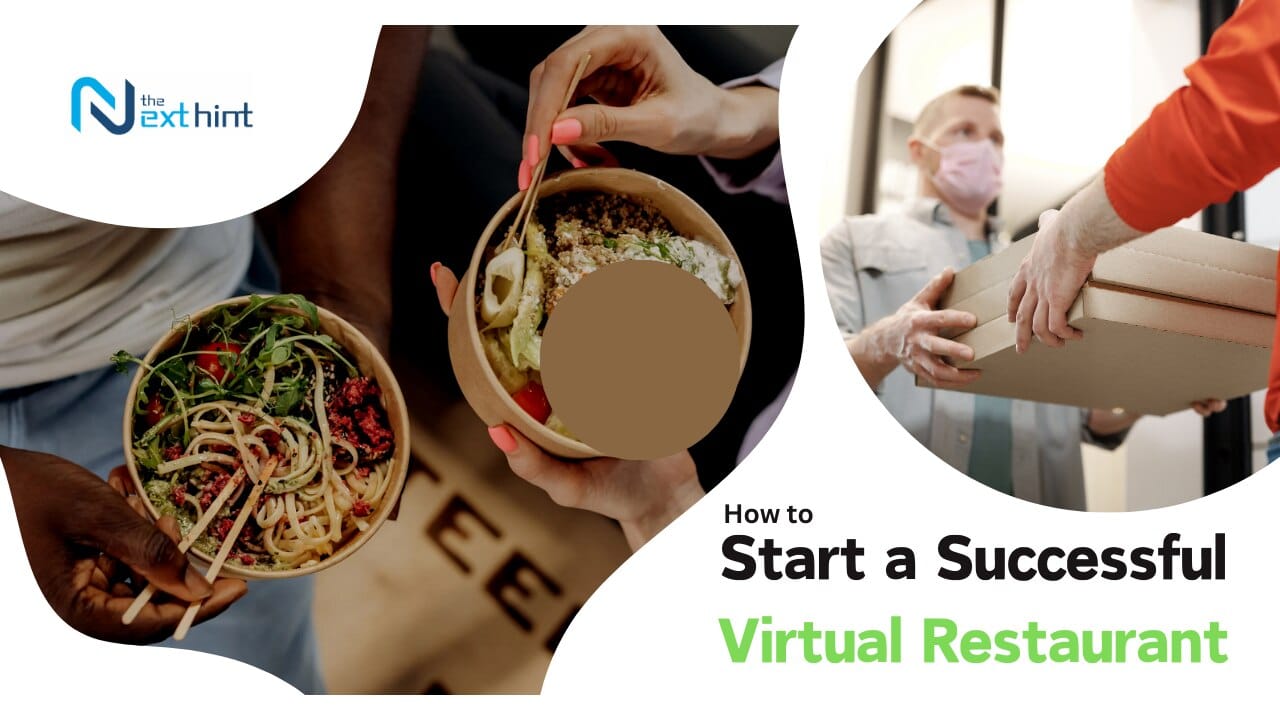The article discusses the rise of virtual restaurants as a response to increased demand for food delivery services. It explores the concept, benefits, and challenges of virtual restaurants, including examples of successful virtual brands. It also provides steps for starting a virtual restaurant from home and lists popular food delivery platforms.
A demand surge in food delivery services allowed experienced restaurateurs to explore their interests and expand their businesses. When opening a restaurant, you first consider a space and a business model. However, owing to a more competitive era and differences in budgets, many individuals have shifted to a newly introduced model, a Virtual Restaurant. A virtual restaurant, also known as a virtual kitchen, is a new-age delivery-only food business offering entrepreneurs a new perspective.
Not just a new-age restaurant business model, but this has assisted cooks and food entrepreneurs with a limited budget. In this article, we have explained everything about virtual restaurants and easy ways to start one. Read it for more guidance.
What is a Virtual Restaurant?

A virtual restaurant is a digital or online-only food service that functions similarly to kitchen restaurants do; however, it features a different brand.
For instance, a running Thai restaurant is mostly known for its oriental food dishes and can start a virtual restaurant focused on Italian dishes, Pizza and Pasta.
What Are Virtual Brands in the Restaurant Business?
A virtual brand is a restaurant or eatery business which has only an online presence. In the pandemic when isolation was a common phase, people preferred to switch to online food delivery instead of eating out.
Some of the famous Virtual brands are,
Bloomin’ Brands, one of America’s largest dining restaurant chains, launched TenderShack in 2020. As of 2025, Tendershack had launched with more than 1000 restaurants making its food
Hooters: A restaurant company, during the pandemic, launched three virtual food brands, Hootie’s Burger Bar, Hootie’s Bait and Tackle, and Hootie’s Chicken Tenders
Denny’s: In 2021, Denny’s launched two virtual brands, The Melt Down and Burger Den. In the same year, the company announced that while The Melt Down makes $1200, Burger Den brings more than $600 from its locations.
What is a Virtual Restaurant From Home?
Similar to a virtual restaurant or virtual kitchen, this model offers food delivery services with a home kitchen. Also known as a cloud kitchen, the only thing you need is to register yourself in food-delivering applications. While registration might be a lengthy process since it requires different certifications, once passed, you will be able to run a food business from your home’s kitchen.
Virtual Restaurant Vs Ghost Kitchen: Differences

Although it is similar to virtual kitchens, ghost kitchens are delivery-only kitchen brands and work differently from traditional working spaces. It works only as a kitchen and does not involve any in-person elements.
In the below-mentioned list, we have listed the major differences between Virtual restaurants and ghost kitchens,
| Virtual Restaurant | Ghost Kitchen |
| 1. Involves Lower Costs | 1. Involves Overhead expenses |
| 2. Related With a Recognisable Brand | 2. Run by a unique branding |
| 3. Absence of Physical Locations to Build Brands and walk-in sales | 3. Might involve staffing challenges and have the advantage of adjusting the menu according to the customer |
How Does a Virtual Restaurant Work?
The new-age technology virtual restaurants differ from traditional restaurants. With its presence in third-party platforms, it never asks for an investment in featured stores and kiosks. Besides, virtual restaurants only ask for a wider social media community for in-store customers. Hence, running your food business virtually adds up the responsibility of appropriately placing in the online listing. Additionally, you should also prioritise emphasising the customer’s and buyer’s mindset, collecting a good delivery experience, and garnering strong reviews on the platforms.
What Are the Benefits of Initiating a Virtual Restaurant?

While there are a plethora of benefits that add up to why you should start a virtual restaurant, the primary ones are,
Virtual Restaurant Poses Lower Risks and Affordable Investments
In a traditional restaurant business, the biggest things we consider while initiating a new restaurant are appropriate real estate and the supplies which are needed to design a kitchen. However, virtual restaurants give you the ease to start a food business without purchasing or renting a place and buying expensive equipment. Instead, it involves developing new strategies to promote your business online.
Increase Sales
If you own a virtual kitchen or restaurant, it will increase your presence in third-party applications. Brands that target new audiences bring more orders for your product. For instance, you can divide your orders into meals, like serving breakfast, lunch, and dinner at their respective time.
Investing in Concepts and Food Items
Food enthusiasts or chefs often have different ideas for running a restaurant. However, owing to financial constraints or related reasons, he might not be able to start a business. In such cases, the best idea is to open a virtual restaurant. Cloud kitchens are not only an affordable food business, but they also let you explore your creativity in culinary.
What Are the Disadvantages of Starting a Virtual Restaurant?
Although there are several advantages of a virtual restaurant, you must consider the challenges or drawbacks you will face when setting up a virtual restaurant. Some of them are,
Demands Regular Attention
Despite virtual restaurants starting with minimum investment, they ask for a routine check-up and a strong bond with customers. Since you have a brand to build, you should be attracting positive reviews and minimal criticism to build a reputation. In cases when you already have a brand, you have the responsibility to bring reputations for both brands, respectively.
Requires Staff and Training
While virtual restaurants from home might not ask for a team of staff, a virtual restaurant owned by a reputable brand would. The models that have adapted a new menu for a virtual kitchen, will ask all the staff members to learn two different kinds of menus.
Prioritise the Delivery Model and Online Food Services
Besides a traditional restaurant asking for good culinary skills and dishes, a virtual restaurant introduces you to several challenges. In such cases, it is advised to use good and hygienic containers that are used to transport the food, the level of packaging, and which food items should taste the best.
How to Start a Virtual Restaurant from Home?

If you have already decided to start a virtual kitchen or restaurant, follow the below-mentioned steps,
Join a Third-Party Platform
If you have not partnered with a food delivery service yet, researching a joining one is a necessary step. Start with learning how their features work, how you can manage with them while tasting their services, and how they will collaborate with your business model. Since, following listing your restaurant, it is expected that you will start receiving orders In such cases, it is advised to understand the model carefully before making any kind of partnerships.
Involve a Detailed Research
For reaching out to the food markets, it is necessary to know the customer’s demands. In such cases, you can either research the internet or talk to the customers.
For instance: A well-known food delivery service used a customer survey to know about the likes and dislikes of the new age customers. This not only helped them to sort things accordingly but also boosted their sales.
Sorting a Business Plan
Even though a virtual kitchen does not require extensive planning, a well-researched, strategic, and targeted business plan can help you to lead in the current competitive era of food businesses.
Taste and create a Strategic Menu
With top-notch quality being the primary focus of your business, talk to your chefs and craft a strategic menu with limited food options. Since many food dishes add up too much work, eventually leading to a decrease in quality.
Launch your Virtual Kitchen
After going through multiple quality, research, and customer analysis, it’s time to launch your menu. Launch your kitchen to the food delivery services and start accepting orders. On the contrary, never forget to request customers for reviews and ratings. As more positive ratings you achieve, you will be able to set up your food business.
5 Food Delivery Services To List Your Virtual Restaurants

With several food delivery services available to consider, the below list contains the popular food delivery apps in 2025,
- GrubHub: Started in 2004, this application provides customers with food options with several specifications.
- Instacart: Although it was initially a grocery service, it later expanded as a reliable food delivery service.
- GoPuff: An app that can be utilised by unique virtual restaurants, GoPuff sells everything from a packet of chips to culinary cuisine.
- Doordash: Known as one of the reputable food delivery services in the United States, it connects cafes, businesses, and virtual kitchens and restaurants. As of 2025, the application has more than 16 billion.
- Uber Eats: One of the popular food delivery services in the United States, Uber Eats delivers across metropolitan cities.
Final Words
Virtual Restaurants or Virtual kitchen business models are one of the affordable inclusions in the modern era of food ventures. While virtual or cloud kitchens were witnessing a spike before the pandemic, the worldwide health crisis inspired many prominent brands to adopt the model. An NPD Group suggests that after the lockdown ended, the United States restaurant digital orders saw a surge of 125 percent.
If you are also an aspiring chef and are looking forward to starting your virtual restaurants, you can get assistance from our above-mentioned guide.
Related: Adapting Restaurants for 2025: Strategies for Revenue Growth




